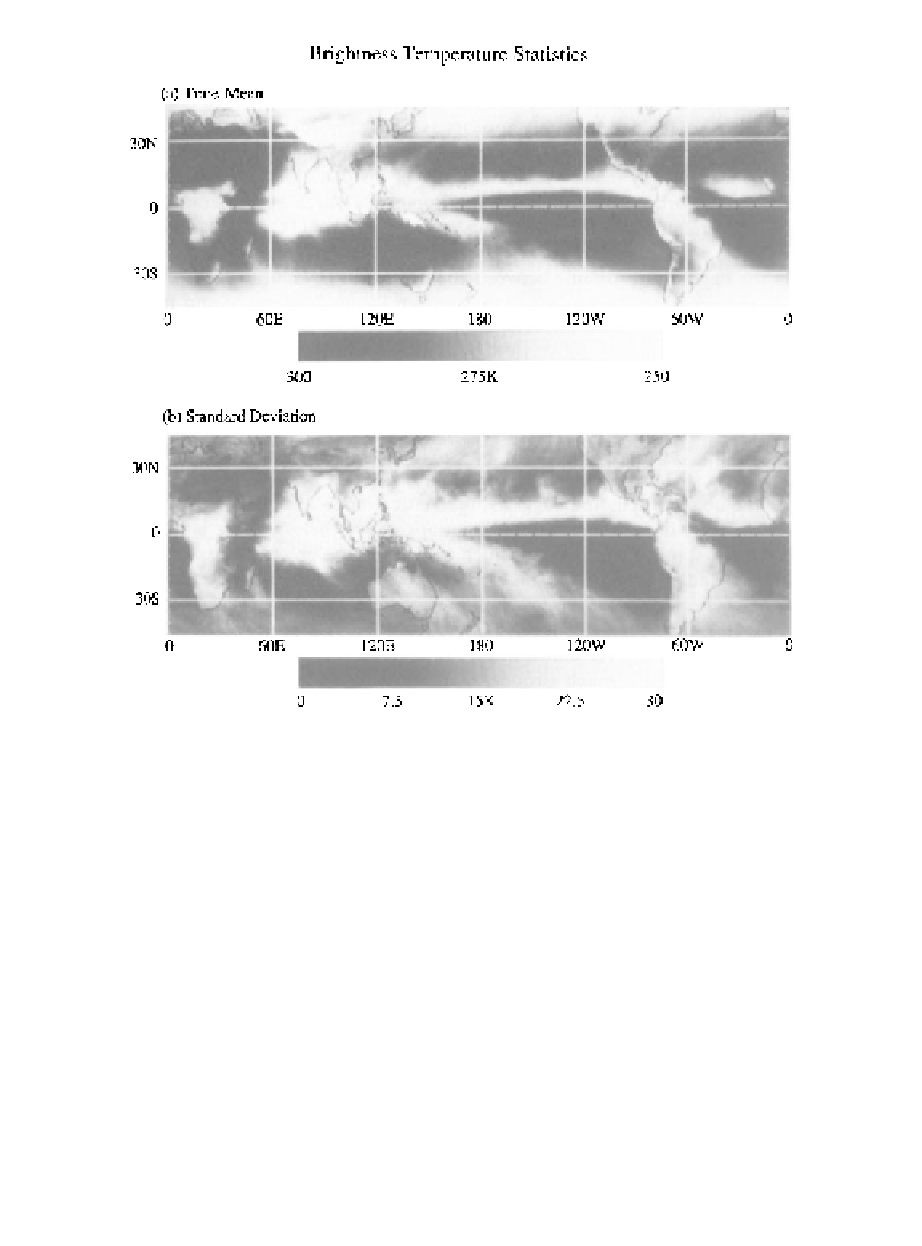Geography Reference
In-Depth Information
Fig. 11.2
(a) Time-mean IR brightness temperature and (b) three-hourly standard deviations about the
time-mean IR brightness temperature for August 14 to December 17, 1983. Low values of
brightness temperature indicate the presence of high cold cirrus anvil clouds. (After Salby
et al., 1991.)
brightness temperatures signal the presence of deep anvil clouds characteristic of
convective storms. The ITCZ appears as a line of deep convective cloud extending
across the Atlantic and Pacific oceans between about 5
◦
and 10
◦
N.
Observations indicate that within the ITCZ precipitation greatly exceeds the
moisture supplied by evaporation from the ocean surface below. Thus, much of
the vapor necessary to maintain the convection in the ITCZ must be supplied by
the converging trade wind flow in the lower troposphere. In this manner the large-
scale flow provides the latent heat supply required to sustain the convection. The
convective heating in turn produces large-scale midtropospheric temperature per-
turbations and (through hydrostatic adjustment) surface and upper level pressure
perturbations, which maintain the low-level inflow.

